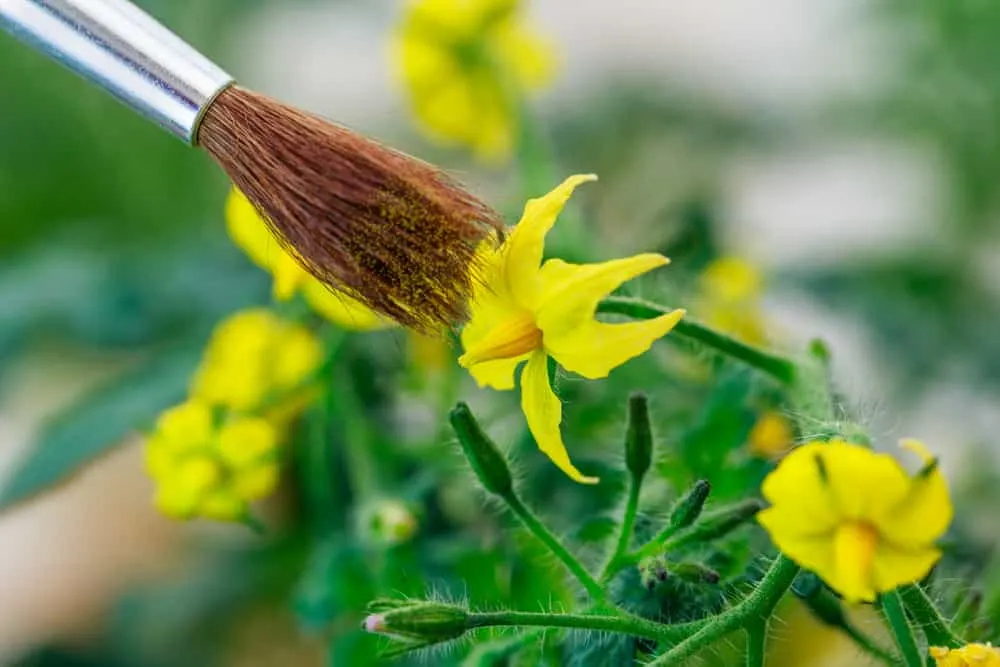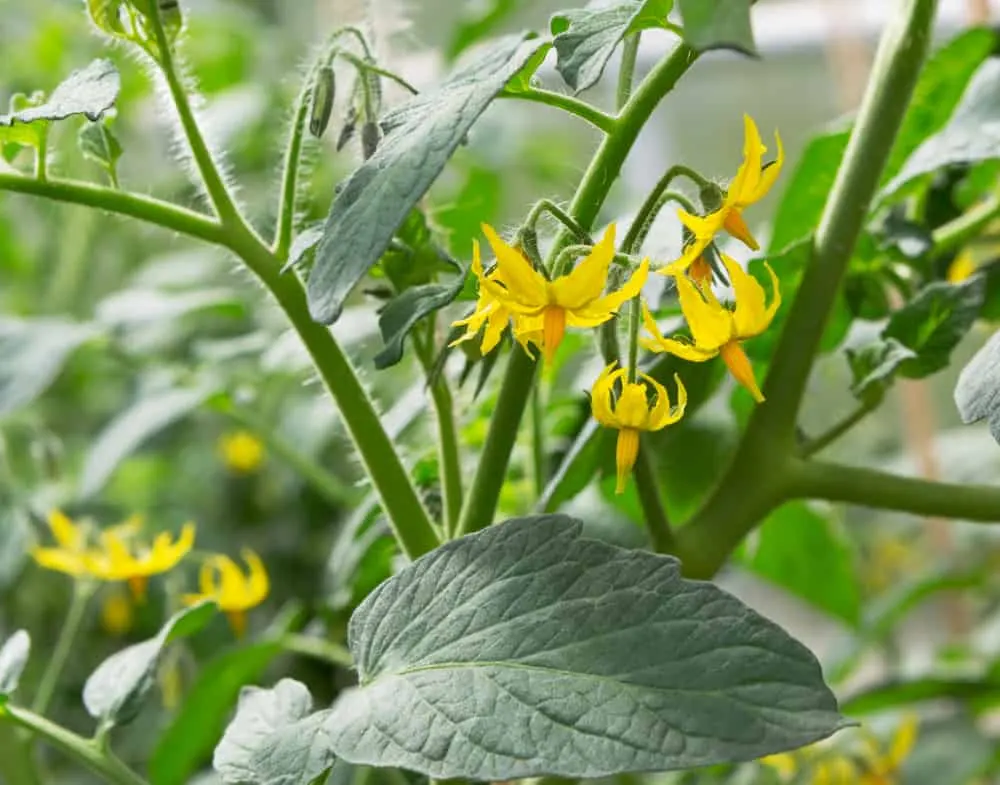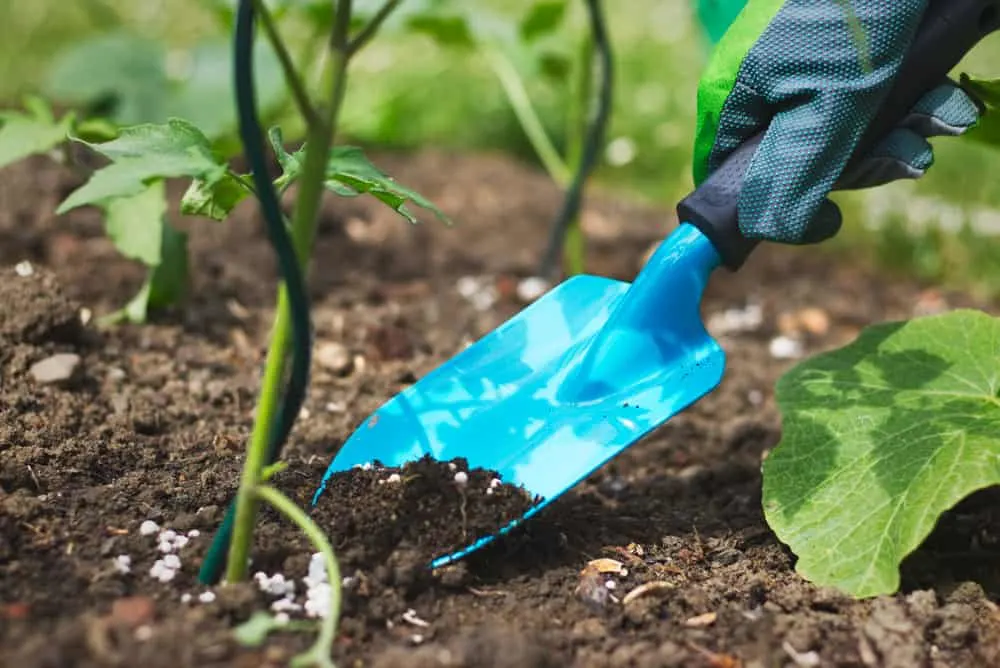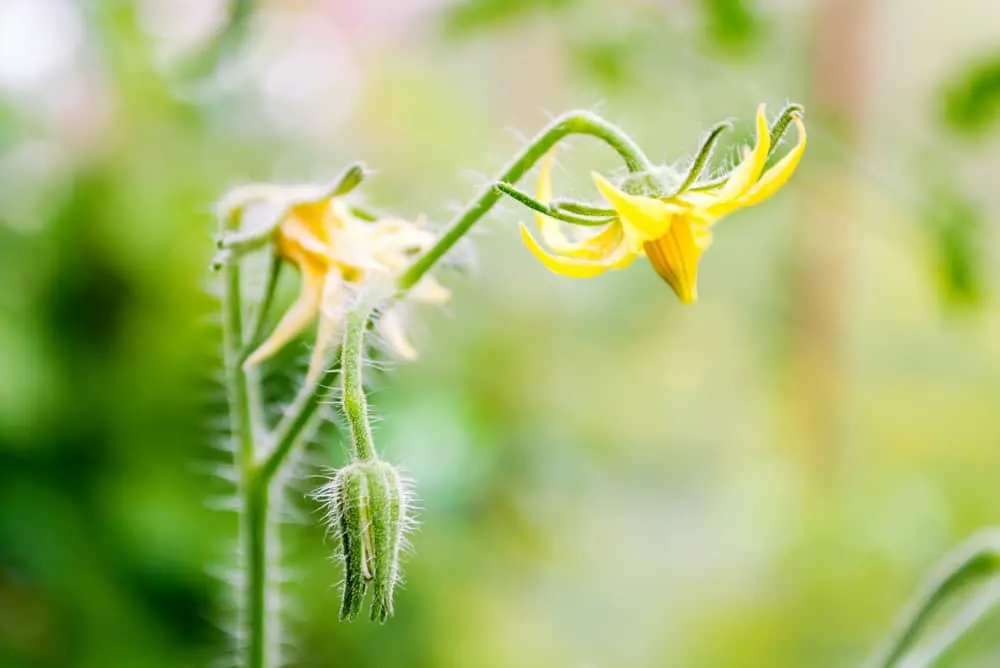
Growing tomatoes is fun, addictive and so rewarding. But there are several hurdles you could face when growing tomatoes at home. From diseases to pests to something as simple as sun-scald.
One challenging hurdle to overcome before you can harvest any fruits is blossom drop.
Blossom drop occurs for many reasons and is, unfortunately, quite common. This problem is concerning, because if your tomato plant doesn’t flower, you won’t get any tomato fruit. The most frustrating thing about blossom drop is that it seems to occur at random, as if there is no cause. But there is always a reason and an accompanying solution that will fix your fruiting problems.
As concerning as it may be, blossom drop is an easy thing to fix, no matter the cause.
1. Extreme Temperatures

The most common reason for blossom drop is extreme temperatures and temperature fluctuations. As we know, temperature management is important for growing tomatoes. The temperatures need to be optimal for pollination and overall tomato plant happiness. If your tomato plant experiences stress in any way, it will cause it to abandon its flowers.
Extreme temperatures of 85F and above, day or night, can cause blossom drop. Anything below 55F will have the same effect. Don’t panic if the weatherman has forecasted a weekend heatwave. Tomato plants tolerate short periods of extreme temperatures. But, anything out of the 70F-85F temperature range for longer periods will cause blossom drop.
In undesirable temperatures, your tomatoes experience stress. Their main goal is purely survival. Over and above that, the heat causes the pollen to become too sticky, so no natural pollination takes place.
One of the easiest ways to combat extreme temperatures is to grow varieties suited to your climate. But if this isn’t an option, there are alternative solutions.
Protect your tomato plants by planting them strategically. Take a good long look at your garden and see where natural shade forms (near east-facing walls for example).
You can also create your own shade with homemade row covers. These are absolute must-haves when growing tomatoes at home. They protect them from the sun and can even prevent pests and diseases.
As beneficial as row covers are, you need to have the right type for them to be most effective. Your row cover opening should also be east-facing. That way they can get the lovely morning sun and be protected during the hottest times of the day. They also protect the plant from cold weather, tackling two problems at once.
2. Lack Of Pollination

Sometimes the weather is on our side, and yet, your flowers are still drying up and dropping. Your gorgeous tomato plants may just need some extra help pollinating.
This may seem daunting, but it’s actually quite simple. The easiest way to aid in the pollinating process is to gently shake your tomato plant. You can also tap on the flowers. This helps pollen fall and get it to where it needs to be.
Another hand-pollinating technique is to use a small, clean paintbrush. You can gather and spread pollen just like pollinating insects. Avoid cross-pollinating by always using a clean brush and never using the same brush for different plants.
Instead of replicating the actions pollinating insects, you can just as easily encourage them to come through to your garden. The best way to do this is to plant some companion plants. Bees, butterflies, and other pollinators love bright flowers that smell good. Sunflowers and lavender are plants that look good and attract many beneficial insects to your garden. Some other flowers include honeysuckle and lilies. Bees are also attracted to some herbs, like dill.
The more your tomato plant gets pollinated, the happier it’ll be. If your tomato flowers aren’t pollinated, the bloom dies and eventually falls off.
3. Lack of Water

Tomato plants are quite thirsty and can be sensitive to a lack of water. While they don’t like to be drenched in water, they should still be watered deeply and frequently.
Deep and frequent watering is especially important while the tomatoes are establishing themselves. But, it’s best to keep up this habit, even after your plant is strong and seemingly healthy. Tomato plant root systems can be deep, sometimes even reaching as far down as five feet.
Shallow watering means that the deep root system isn’t getting sufficient water, stressing your tomato plant and causing it to drop its flowers.
The best way to water is to focus the water on the soil around the base of your plant. You’ll want to avoid overhead watering as much as possible. Overhead watering causes splashing which helps spread disease.
Water your tomatoes in the morning, the coolest time of day. With less evaporation at this time, it saves water and ensures your tomatoes have enough water throughout the day.
You’ll need to water more often during hotter temperatures. You can also mulch around the base of your plant to keep the soil moist and the roots cool.
4. Humidity

Humidity plays a major role in the overall health of your tomatoes. Too much humidity creates the perfect environment for fungal growth and it causes the pollen to clump within the tomato flower. On the other hand, too little humidity and extreme dryness make the pollen sticky, just like high temperatures.
Either way, your tomatoes will once again struggle to pollinate. And the introduction of diseases also plays a role in blossom drop.
For areas with low levels of humidity, you can break the cardinal rule of overhead watering. Simply, but with care, water your tomato plant’s foliage. This cools the plant down and increases the humidity around your tomatoes.
Do not do this if you live in high humidity areas, as you will increase the possibility of fungal diseases. Instead, increase airflow between your tomatoes. The best way to do this is by spacing your tomatoes correctly and pruning them effectively. Correct spacing and pruning reduce the chances of diseases catching and spreading across your plant.
Another way is to plant humidity-tolerant varieties, like ‘Yellow Pear’ and ‘Flora-Dade’.
5. Too Much Fertilizer, Or Too Little

I know we all love our tomatoes, but sometimes we can care for them too much. We understandably want the best, plumpest, brightest tomatoes. But in these efforts, we could be watering or fertilizing too much, with the idea of pushing our tomato plants to flower and fruit.
The wrong amounts of fertilizer, whether it’s too little or too much, can be detrimental to your tomatoes. Just increasing certain nutrients can cause an imbalance that results in blossom drop.
Nitrogen is key during the early growth of your tomatoes. It encourages leaf growth and plays a big role in the production of chlorophyll and photosynthesis. But, when you’re looking for flowers, this is a problem in itself.
Simply, if your tomato plant has too much greenery, all its energy is going towards those leaves and stems. Little to none of its energy is being directed to flowers and fruits, ultimately causing blossom drop.
Too little fertilizer also presents its own issues. If you’re not feeding your tomato plants correctly, they won’t get the necessary nutrients. Too little nitrogen, phosphorus, and potassium stunt the growth of your tomatoes and can cause stress. This sends your plants into survival mode, causing them to drop their flowers.
The fix? Feeding and fertilizing correctly. Opt for organic fertilizers or tomato fertilizers with balanced nutrients. You only need to fertilize soon after planting and just before flowering for the best results.
6. Overproduction

Sometimes, even when our tomato plant is healthy, it can still punish us. You may notice an abundance of flowers and jump with glee with the prospect of a bountiful harvest one day.
But hold your horseradishes.
As great as it may seem, even this could lead to blossom drop. Lots of flowers and fruits cause an imbalance of nutrients within the plant. The plant may decide to focus on survival rather than producing fruits, leading to blossom drop.
This isn’t something to be too concerned with. The problem usually fixes itself after the initial harvest. You might not have as large a harvest as you were hoping for, but the tomatoes you do get will, without a doubt, be plump and juicy.
7. Pests and Diseases

One of the main stressors for plants is pests and diseases. When it comes to tomatoes, there are several to keep an eye out for. From aphids and snails to early blight and more extreme diseases like verticillium wilt. When your tomatoes are fighting fungi or dealing with hungry aphids, they drop their blossoms in an attempt to stay alive.
When it comes to pests and diseases, prevention is always better than cure. Practicing good garden hygiene is the best method. Prune away dead and diseased leaves. Encourage good airflow and invest in or build row covers. Make sure you’re watering correctly and that your garden tools are always clean.
Your first thought when it comes to pests may be to pick up a pesticide. But be aware – some of these do more harm than good, even if they’re considered organic. Neem oil is a favorite among organic gardeners, but it can also deter pollinators and other beneficial insects.
There are several ways to safely get rid of the various tomato pests, like the introduction of more beneficial insects. Plant attractive companion plants and flowers to attract wasps, ladybugs, bees, and even a few birds.
Blossom drop can be scary and daunting, especially when you don’t know the cause. But the above fixes are perfect preventative measures too. By planting and caring for your tomatoes correctly, you have less chance of blossom drop and several other issues when it comes to growing tomatoes.
